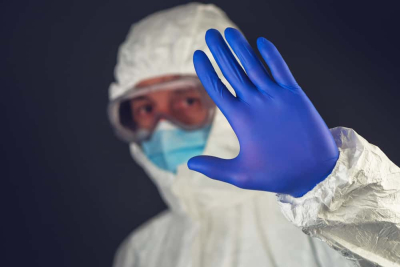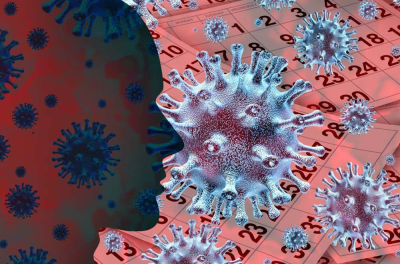The COVID-19 Virus Survives Airborne (Airborne)

Read all the news articles about the coronavirus (COVID-19) here.
COVID-19transmitted through droplet or droplets of saliva. It usually occurs when a positive patient sneezes or coughs and is splashed with a liquid containing the virus. The spread of COVID-19 does not occur through airborne (air), but recent research has shown that a positive patient’s saliva splash can stay in the air under several conditions.
On Thursday (9/7), the world health organization (WHO) officially acknowledged research evidence that shows transmission of the corona virus that causes COVID-19 can occur through the air.
This admission is a response to an open letter submitted by 239 scientists from 30 countries. The scientists urged WHO to review the research and revise recommended protocols for preventing transmission of COVID-19 in the community according to the new evidence.
Proof droplet COVID-19 patients can survive in the air and are contagious

Discussions about the potential for airborne transmission of COVID-19 have been going on for months. One proof published in the journal preprint medRxiv, shows that COVID-19 can stay in the air for three hours in aerosol form. Viruses in the form of aerosols can be inhaled and make a person infected.
Aerosols are fine particles and can float in the air. An example of a liquid in the form of an aerosol is fog. It can stay in the air for hours and can be inhaled
Previously known, COVID-19transmitted through saliva or splash droplet that comes when an infected person coughs, sneezes, or talks. Because the saliva splash is heavy, it can only be aired for a few seconds before falling to the surface because it is attracted by the force of gravity. Hence one of the preventive protocols is to keep a safe distance about 2 meters.
However aerosols are a different physical state droplet. Viruses in the form of aerosols can stay in the air for a long time and have the potential to travel over long distances. For example, spread throughout the room.
How droplet can spread aerosol or airborne?

Droplet COVID-19 patientscan change form into an aerosol, one of which is when the doctor installs a breathing apparatus (ventilator) on a patient with respiratory failure.
In the process of installing the device, the patient’s breathing fluid can change form into an aerosol and become airborne.
“When performing aerosol-generating procedures, there is a possibility for them to occur aerosolization or aerosol formation from droplet patients, “said dr. Maria Van Kerkhove, head of the WHO disease and zoonosis unit.
At this stage the WHO warning is only focusedto medical personnel, especially those who handle COVID-19 patients directly.
The latest theory says the virus in the form of an aerosol can also form when yawning, speaking and breathing normally. However, WHO is still finding out how likely it is that aerosolization will be released in this way.
With the recognition of this new evidence from the world health organization, protocols for preventing transmission of COVID-19 through air transmission must also be applied among the general public.
In the community, it is feared that the transmission of COVID-19 through the air can occur in rooms with poor air circulation, crowded and congested rooms such as in public transportation.
WHO made a few revisions in written prevention recommendations WHO on the official website. In its new guidelines, WHO mentions several areas that are prone to airborne transmission, namely, nightclubs, places of worship, workplaces where many people are talking or shouting, choir training areas and fitness centers.
Prevention protocols are still the same, such as maintaining distance, using masks, and washing hands frequently.

Early studies showing the coronavirus can survive in the air

Prior to publication of evidence droplet can change shape to aerosol. Other studies were also carried out researchers at the National Center for Infectious Diseases (NCID) and DSO National Laboratories.
In published research Journal of the American Medical Association (JAMA), these experts researched isolation rooms where patients treated positive for COVID-19.
This research is actually more focused on testing the equipment used by the patient. But they also do air tests and take samples from the surface of the air ducts.
All of the air samples taken were negative. However, a test swab sample taken from the air vent was positive. This shows that the micro-droplet or very small droplets of saliva can be carried by air and stick to objects such as vents.
Scientists are currently looking specifically at how humidity, temperature, and sunlight can affect how long viruses stay on surfaces.
Robert Redfield director Centers for Disease Control and Prevention America (CDC) said last month that it was conducting a study to find out how long COVID-19 could last. In particular, how long the virus can stay on the surface of objects.
According to him, in copper and steel, this virus lasted approximately two hours. On other surfaces such as cardboard or plastic it will be relatively longer. But they don’t yet know what about what is suspended in the air.
Redfield added that infection from contact with surfaces has a greater potential than that droplet that is in the air.
Hello Health Group does not provide medical advice, diagnosis or treatment.
- van Doremalen, N., Bushmaker, T., Morris, D., Holbrook, M., Gamble, A., Williamson, B., Tamin, A., Harcourt, J., Thornburg, N., Gerber, S. , Lloyd-Smith, J., de Wit, E. and Munster, V., 2021. Aerosol and surface stability of HCoV-19 (SARS-CoV-2) compared to SARS-CoV-1.
- Ong, S., Tan, Y., Chia, P., Lee, T., Ng, O., Wong, M. and Marimuthu, K., 2021. Air, Surface Environmental, and Personal Protective Equipment Contamination by Severe Acute Respiratory Syndrome Coronavirus 2 (SARS-CoV-2) From a Symptomatic Patient. JAMA,.
- WHO. Modes of transmission of virus causing COVID-19: implications for IPC precaution recommendations. Retrieved 10 July 2021 from: https://www.who.int/news-room/commentaries/detail/modes-of-transmission-of-virus-causing-covid-19-implications-for-ipc-precaution-recommendations